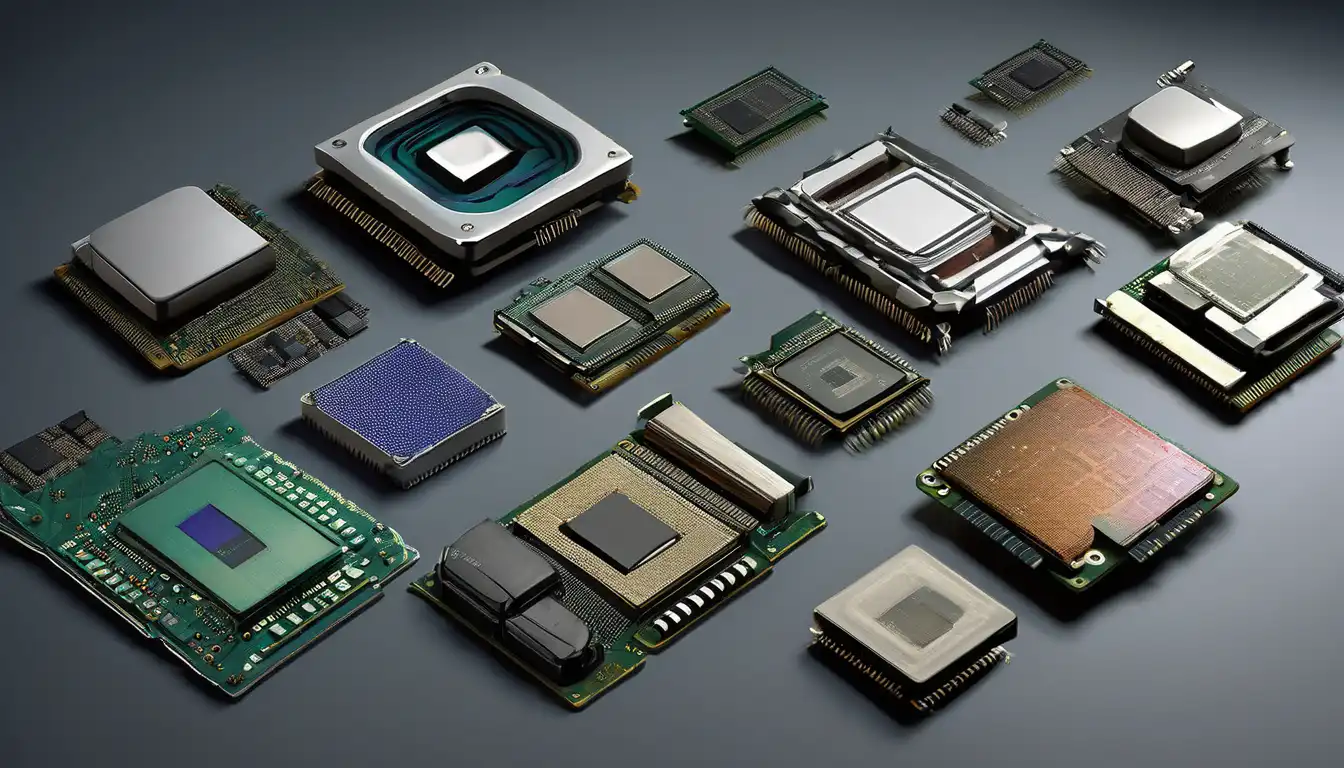The Dawn of Computing: Early Processor Technologies
The evolution of computer processors represents one of the most remarkable technological journeys in human history. Beginning with primitive vacuum tube systems in the 1940s, processors have undergone revolutionary changes that have fundamentally transformed how we live, work, and communicate. The first electronic computers, such as ENIAC, utilized thousands of vacuum tubes that consumed enormous amounts of power and required constant maintenance. These early processors operated at speeds measured in kilohertz and occupied entire rooms, yet they laid the foundation for the digital revolution that would follow.
The Transistor Revolution
The invention of the transistor in 1947 at Bell Labs marked a pivotal moment in processor evolution. Transistors replaced bulky vacuum tubes, offering smaller size, lower power consumption, and greater reliability. This breakthrough enabled the development of second-generation computers in the late 1950s and early 1960s. Companies like IBM began producing transistor-based systems that were more practical for business and scientific applications. The transition from tubes to transistors represented the first major leap in processor miniaturization and efficiency.
The Integrated Circuit Era
The 1960s witnessed another transformative development with the invention of the integrated circuit (IC). Jack Kilby and Robert Noyce independently developed methods to combine multiple transistors on a single semiconductor chip. This innovation led to third-generation computers and paved the way for the microprocessor revolution. Integrated circuits allowed for unprecedented miniaturization, with processor components becoming increasingly smaller and more powerful. The development of IC manufacturing techniques enabled mass production of reliable, affordable processors.
The Birth of Microprocessors
In 1971, Intel introduced the 4004, the world's first commercially available microprocessor. This 4-bit processor contained 2,300 transistors and operated at 740 kHz, representing a monumental achievement in processor design. The 4004 demonstrated that complex computational capabilities could be integrated onto a single chip. This breakthrough inspired rapid innovation, leading to the 8-bit Intel 8080 and other early microprocessors that powered the first personal computers. The microprocessor era had begun, setting the stage for the personal computing revolution.
The Personal Computing Boom
The late 1970s and 1980s saw processors evolve to meet the demands of the growing personal computer market. Intel's 8086 and 8088 processors, introduced in 1978-1979, established the x86 architecture that would dominate personal computing for decades. These 16-bit processors offered significantly improved performance and memory addressing capabilities. The IBM PC's adoption of the 8088 processor in 1981 cemented Intel's position as an industry leader and established standards that would shape processor development for years to come.
The 32-bit Revolution and Performance Wars
The 1980s and 1990s witnessed intense competition and rapid innovation in processor design. Intel's 80386, introduced in 1985, brought 32-bit processing to the mainstream, while competitors like AMD began challenging Intel's dominance. The period saw the emergence of reduced instruction set computing (RISC) architectures as alternatives to complex instruction set computing (CISC) designs. Processor clock speeds increased dramatically, from a few megahertz to hundreds of megahertz, while transistor counts grew exponentially according to Moore's Law.
The Multi-Core Era and Modern Innovations
The early 2000s marked a fundamental shift in processor design philosophy. As single-core processors approached physical limitations in clock speed and power consumption, manufacturers turned to multi-core architectures. Intel and AMD began producing dual-core, quad-core, and eventually processors with dozens of cores. This parallel processing approach allowed for continued performance improvements while managing power efficiency. Modern processors also incorporate advanced features like hyper-threading, larger cache memories, and integrated graphics capabilities.
Current Trends and Future Directions
Today's processors represent the culmination of decades of innovation. Current trends include heterogeneous computing architectures, artificial intelligence acceleration, and specialized processing units for specific tasks. The industry continues to push the boundaries of semiconductor manufacturing, with process nodes shrinking to just a few nanometers. Emerging technologies like quantum computing, neuromorphic processors, and photonic computing promise to redefine what's possible in processor performance. The evolution continues as researchers explore new materials and architectures beyond traditional silicon-based designs.
Impact on Society and Technology
The evolution of computer processors has had profound implications across every aspect of modern life. From enabling the internet revolution to powering smartphones and cloud computing, processors have become the engines of digital transformation. The continuous improvement in processing power has driven innovations in fields ranging from medical research to entertainment, artificial intelligence to scientific discovery. As processors continue to evolve, they will undoubtedly enable new technologies and applications that we can scarcely imagine today.
Key Milestones in Processor Evolution
- 1947: Invention of the transistor at Bell Labs
- 1958: First integrated circuit developed
- 1971: Intel 4004, the first microprocessor
- 1978: Intel 8086 establishes x86 architecture
- 1985: Intel 80386 brings 32-bit processing to PCs
- 1993: Intel Pentium processor introduces superscalar architecture
- 2005: First consumer multi-core processors released
- 2010s: Mobile processors revolutionize computing
- 2020s: AI-optimized processors and quantum computing research
The journey of processor evolution demonstrates humanity's remarkable capacity for innovation and technological progress. From room-sized vacuum tube systems to powerful chips smaller than a fingernail, processors have followed an extraordinary trajectory of improvement. This evolution continues today, with new breakthroughs promising even more dramatic advances in computing capability. The story of processor development is far from over, and the next chapters will likely be as revolutionary as those that have come before.
